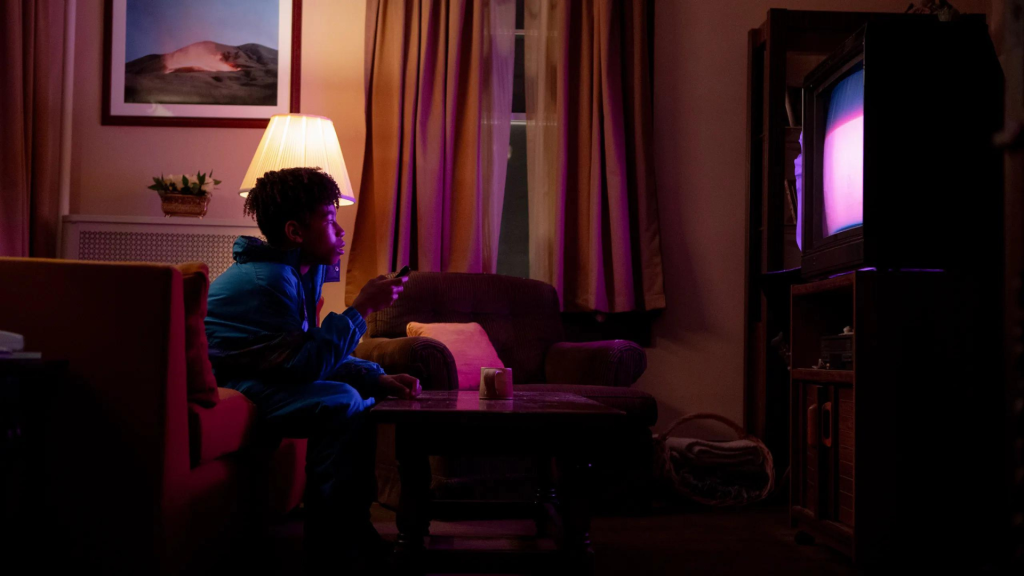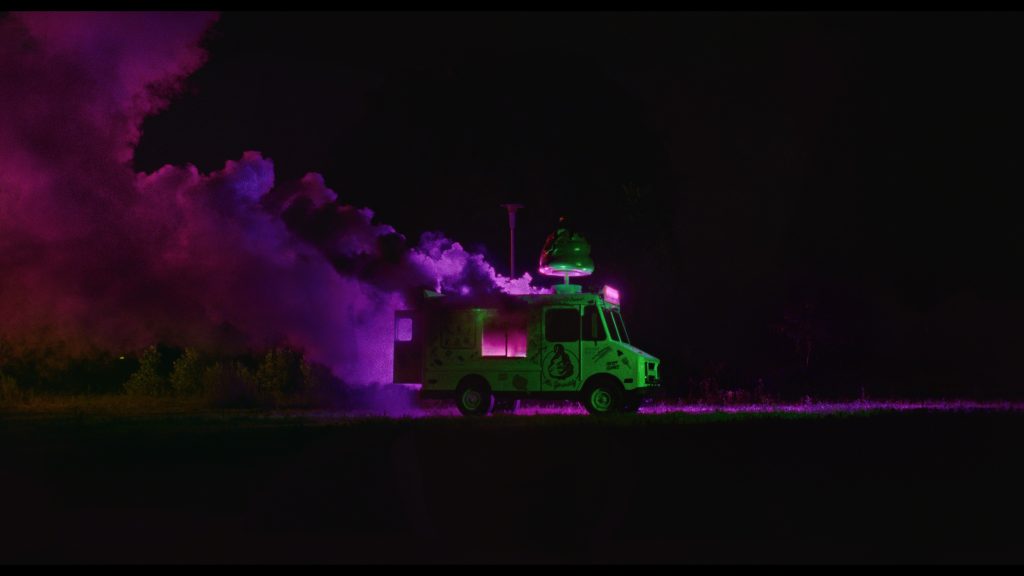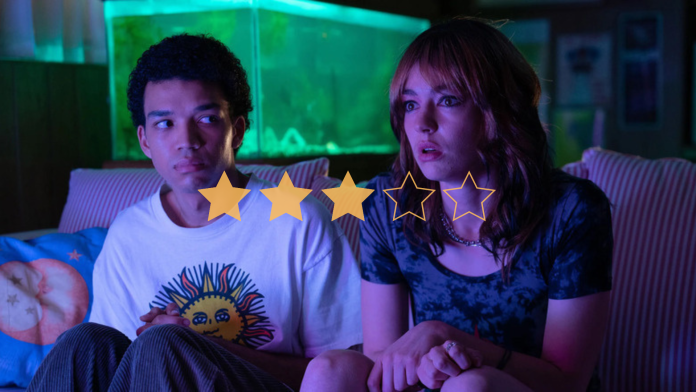Jane Schoenbrun returns with I Saw the TV Glow, a convention-defying psychological horror that will thrill and baffle audiences in equal measure.
★★★☆☆
On the face of it, I Saw the TV Glow is an archetypal, perhaps verging on parodic, A24 horror film. Jane Schoenbrun’s follow-up to We’re All Going to the World’s Fair depicts two angsty teens as they navigate the now-retro cultural milieu of the late 1990s, with the customary undercurrent of trauma bubbling beneath the surface; there’s even a Phoebe Bridgers cameo. But this is an altogether stranger take on what has been dubbed ‘elevated horror’, a disconcerting journey of self-discovery that defies narrative convention.
Owen is a quiet, awkward teen when he first meets Maddy, a grungy girl two grades above him at school. She is reading a book on her favourite TV show, The Pink Opaque, which Owen has only ever seen advertised as he is too young to watch. The show is a composite of several real-life ‘90s supernatural programmes—think Buffy crossed with Goosebumps. Its premise of two girls who meet through a psychic connection to battle evil creatures speaks to Owen when he finally gets to see it, sneaking out to Maddy’s place to watch an episode and later receiving tapes recorded on her VCR. The film follows Owen as Maddy swings in and out of his life, the line between the fiction of The Pink Opaque and their far less exciting reality becoming increasingly blurred.
It really is wonderful to see a studio like A24, which acts as a distributor for I Saw the TV Glow, continuing to take risks with such formally daring work. Any fears that this is merely a rehash of recent nostalgic horror fare—see Stranger Things, It or The Black Phone—are soon allayed when the film’s plot takes a series of unconventional turns. Wrong-footed by the story’s chronology and with an increasing sense that our narrator may not be entirely reliable, the viewer is invited to piece together meaning, echoing David Lynch’s Mulholland Drive or the more recent Aftersun by Charlotte Wells.

This can make for a frustrating watch at times, and Schoenbrun doesn’t quite have the deftness of touch when it comes to fragmentation that those two films display; when the puzzle starts coming together in the film’s final act it feels like information has been withdrawn for no good reason other than narrative tension. But what it shares with them both is an indefinable generic style and a lurking unease that gets under your skin without overtly announcing itself.
Both Maddy and Owen are on journeys of identity, the former experiencing life as a lesbian in the social jungle of a US high school, the latter not sure exactly what they’re going through: “Do you like girls?” asks Maddy. “I think that I like TV shows,” Owen replies.
Throughout the film Owen’s face is lit by an ominous, oppressive glow, from TVs, streetlights and a recurring fish tank. This use of chiaroscuro is unsettling, Owen consistently retreating from a light that may just as easily blind him as gift him enlightenment. A climactic scene in an old primary school star dome illustrates Schoenbrun and cinematographer Eric K. Yue’s sophisticated understanding of lighting as a filmic device, a series of constellations projected onto Maddy’s face as she invites Owen to seek meaning amidst the chaos of their lives.

Brigette Lundy-Paine is exceptional as Maddy, whom they play across the span of over a decade. The Atypical star communicates their character’s vulnerability with a remarkably light touch, a faintly quavering voice suggesting the familial trauma and social ostracism otherwise concealed by her cold exterior. Justice Smith’s job as Owen is arguably tougher—he is our narrator but no more transparent than his mysterious friend—and occasionally he struggles under the weight of the role. In his element as the anxious teenager, he is less convincing as Owen ages, and every scene without his co-star misses their presence. Lundy-Paine is very much the breakout performer here.
It is possible that I Saw the TV Glow will be a Rorschach test for its viewers and their own experiences of sexuality, gender and identity. What may be a baffling and abrupt denouement to some will ring truer for others, and the question of whether the film is hopeful or not will undoubtedly spark debate. Imperfect though it is, this is not the textbook horror flick most will expect on walking into the cinema, and we should be grateful for its courage.
The Verdict
A visually and narratively daring film, I Saw the TV Glow must be praised for its unconventional take on the ‘elevated horror’ format. With such an unusual approach to exploring selfhood it won’t work for everyone, but has all the makings of a future cult classic.
Words by Louis Roberts
I Saw The TV Glow premiered at Sundance Film Festival on January 18, 2024.
Support The Indiependent
We’re trying to raise £200 a month to help cover our operational costs. This includes our ‘Writer of the Month’ awards, where we recognise the amazing work produced by our contributor team. If you’ve enjoyed reading our site, we’d really appreciate it if you could donate to The Indiependent. Whether you can give £1 or £10, you’d be making a huge difference to our small team.
